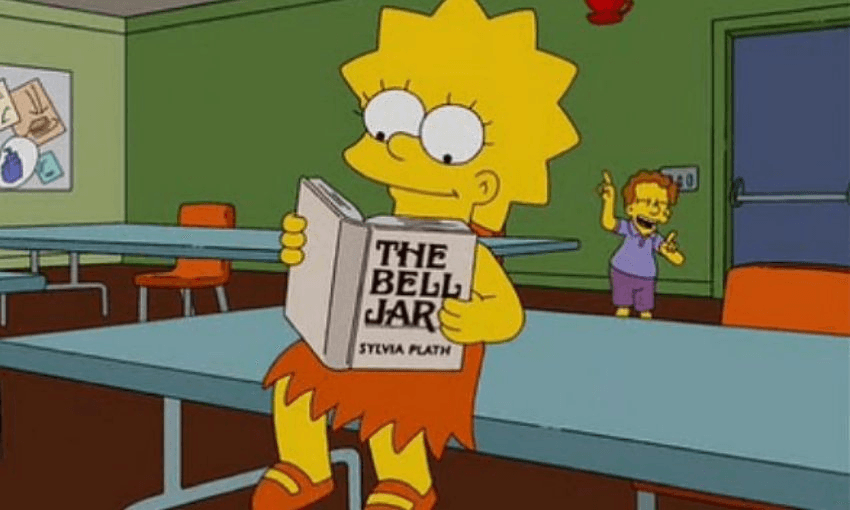The only published and available best-selling indie book chart in New Zealand is the top 10 sales list recorded every week at Unity Books’ stores in High St, Auckland, and Willis St, Wellington.
AUCKLAND
1 Auē by Becky Manawatu (Mākaro Press, $35)
Elating, awful and true in all the ways that matter. Winner of the Jann Medlicott Acorn Prize for Fiction at last week’s Ockham New Zealand Book Awards.
Poet Ben Brown wrote about it for us, including this bang-on bit: “Consider the bravery of children, reliant as they are upon the grown-up world around them for every provision. A land of giants, gods and monsters, as often as not chaotic as hell and too caught up in its own righteous mayhem to concern itself with the needs of its offspring.”
2 The Mirror and the Light by Hilary Mantel (Fourth Estate, $50)
Review incoming!
3 Before the Coffee Gets Cold by Toshikazu Kawaguchi (Picador, $20)
“There’s not especially much to talk about, it’s somewhere between ‘just fine’ and ‘not very good’, and I have no idea why so many people are buying it.” – our reviewer, way back near the start of this one’s top 10 run (still yet to make the Wellington list, we note).
4 The Glass Hotel by Emily St. John Mandel (Picador, $35)
New from the author of wildly relevant and adored pandemic novel, Station Eleven.
5 Where The Crawdads Sing by Delia Owens (Little, Brown Book, $25)
A neglected girl finds solace in the swamps, a flock of gulls, and the natural order of things. You’ll feel washed clean when you’re done.
6 Girl, Woman, Other by Bernardine Evaristo (Penguin Random House, $24)
Winner of the 2019 Booker Prize.
7 Kim Jiyoung, Born 1982 by Cho Nam-Joo (Scribner, $33)
“The first Korean novel in nearly a decade to sell more than one million copies, it has become both a touchstone for a conversation around feminism and gender and a lightning rod for anti-feminists who view the book as inciting misandry (there was a crowdfunding campaign for a book called Kim Ji‑hoon, Born 1990, showing the ‘reverse discrimination’ faced by men).” – the Guardian.
8 One Minute Crying Time by Barbara Ewing (Massey University Press, $40)
We ran a double review when this memoir released the other day – excellent takes from Linda Burgess and Michael Hurst. Extremely gorgeous cover.
9 Atomic Habits: An Easy & Proven Way to Build Good Habits & Break Bad Ones by James Clear (Penguin Random House, $37)
Author’s most recent tweet:
Raise your ambitions. Lower your expectations. The higher your ambitions, the bolder your actions. The lower your expectations, the greater your satisfaction. Change the world and be happy along the way.
10 Tyll by Daniel Kehlmann (Quercus, $38)
“When Daniel Kehlmann read the news that the former Nissan executive Carlos Ghosn, facing financial misconduct charges in Japan, fled the country in a box, he couldn’t help but feel a twinge of admiration.
It was the kind of caper that he might have written into one of his novels, where escape artists, pranksters or con men often outwit their adversaries.” – the New York Times.
WELLINGTON
1 Auē by Becky Manawatu (Mākaro Press, $35)
2 The Mirror and the Light by Hilary Mantel (Fourth Estate, $50)
3 Dead People I Have Known by Shayne Carter (Victoria University Press, $40)
Winner of the General Non-Fiction category at the Ockham New Zealand Book Awards; get a feel for it in this short sharp extract.
4 Girl, Woman, Other by Bernadine Evaristo (Penguin, $24)
5 Redhead by the Side of the Road by Anne Tyler (Chatto & Windus, $35)
Top three lines from a very well done Washington Post review:
Tyler spins a small story about a man perplexed by the tepid state of his life.
He may not have a pulse, but he does have a girlfriend. “She was matronly,” Tyler writes, “which Micah found kind of a turn-on.” That marks the erotic peak of this novel.
The movie adaptation should be filmed entirely in shades of beige.
6 Actress by Anne Enright (Jonathan Cape, $35)
7 One Minute Crying Time by Barbara Ewing (Massey University Press, $40)
8 A Mistake by Carl Shuker (Victoria University Press, $30)
A fine, strong, no-nonsense novel; we were riveted and aspire to one day be as brave in meetings as protagonist Dr Elizabeth Taylor.
9 High Wire by Lloyd Jones & Euan MacLeod (Massey University Press, $45)
Publisher Nicola Legat, at the book’s virtual launch over at Poetry Shelf:
“High Wire brings together Booker finalist writer Lloyd Jones and artist Euan Macleod. It is the first in the new kōrero series of ‘picture books written and made for grown-ups’ and designed to showcase leading New Zealand writers and artists working together in a collaborative and dynamic way.
In High Wire the narrators playfully set out across the Tasman, literally on a high wire. Macleod’s striking drawings explore notions of home, and depict homeward thoughts and dreams. High Wire also enters a metaphysical place where art is made, a place where any ambitious art-making enterprise requires its participants to hold their nerve and not look down.”
10 A Thousand Moons by Sebastian Barry (Faber, $37)
A follow-up to Barry’s acclaimed 2016 novel Days Without End. “Sebastian Barry… has a big, fat, lyrical style… He is a major force of nature… An absolutely amazing, wonderful novel; penetrating; light as a feather; really clever.” – Tilly Lloyd on RNZ.



